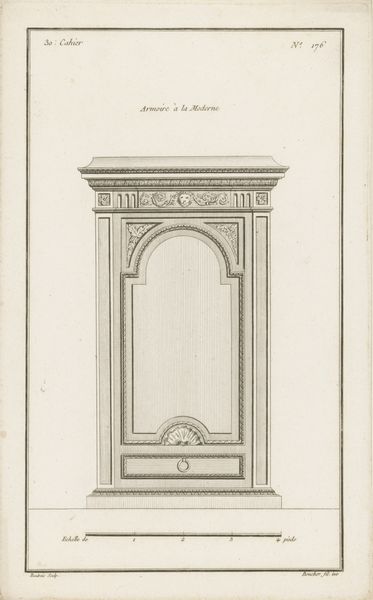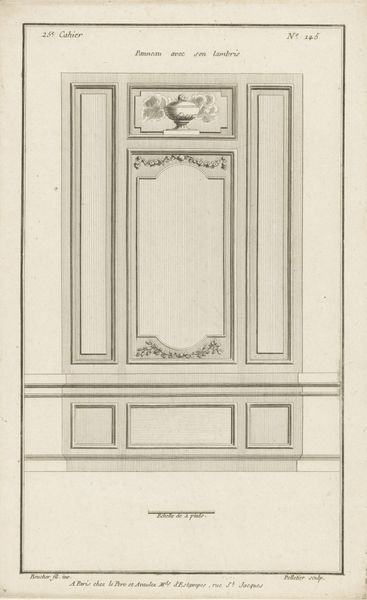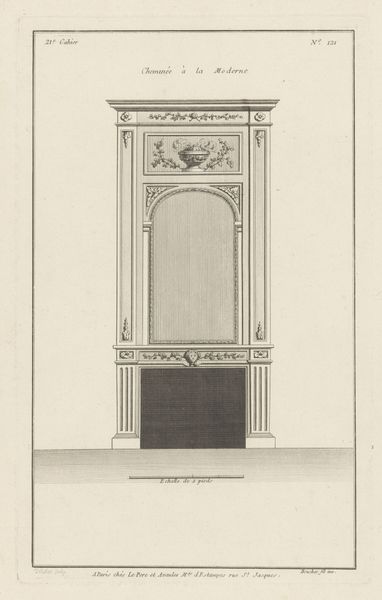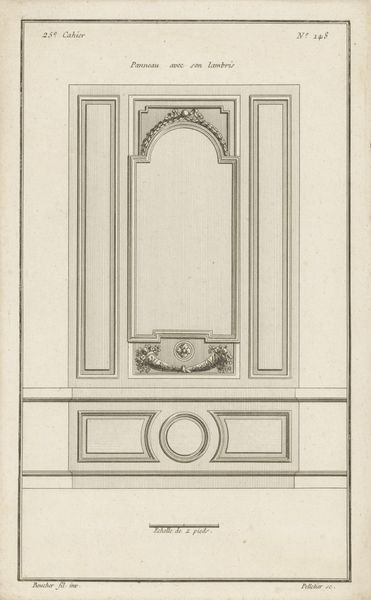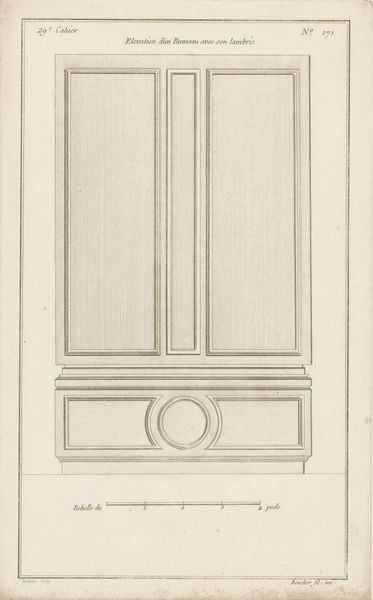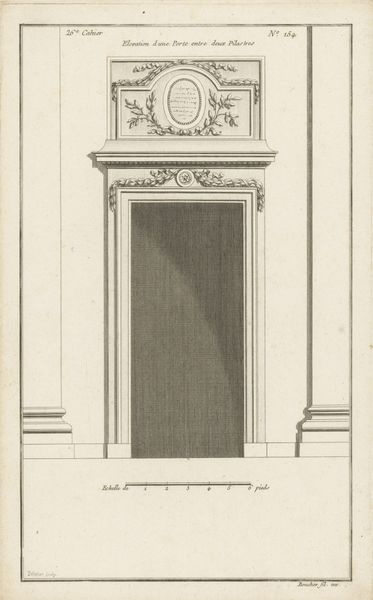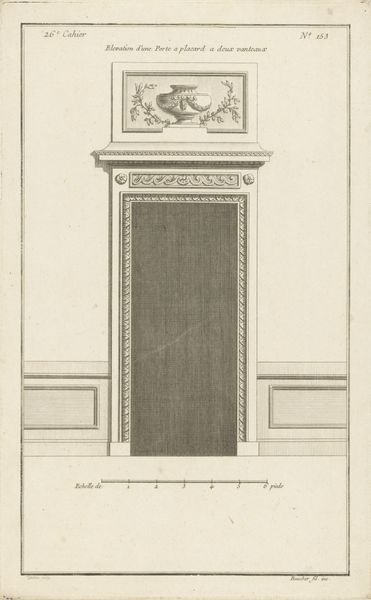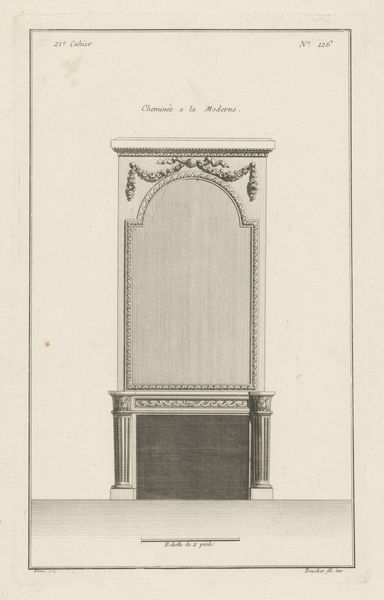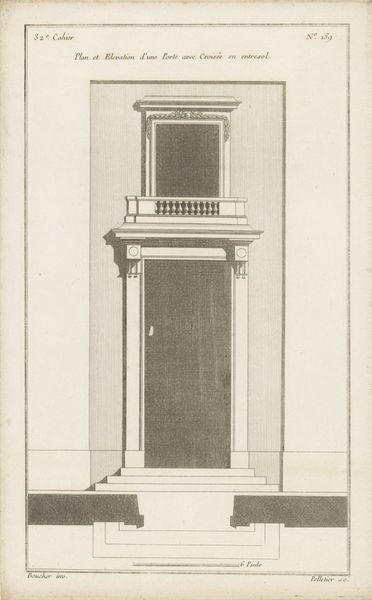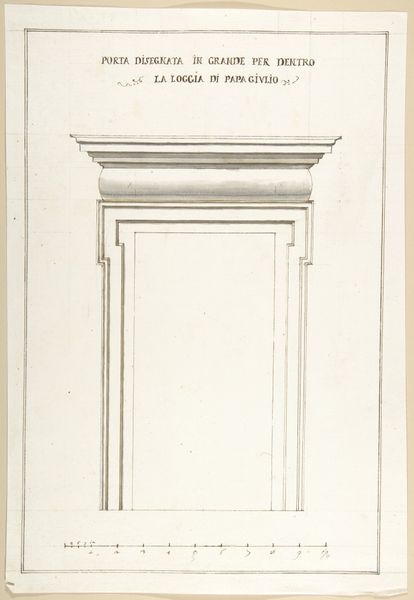
drawing, print, etching, paper, engraving, architecture
#
drawing
#
baroque
# print
#
etching
#
classical-realism
#
paper
#
form
#
geometric
#
line
#
history-painting
#
engraving
#
architecture
Dimensions: width 168 mm, height 107 mm
Copyright: Rijks Museum: Open Domain
Curator: The artwork before us, created between 1753 and 1768 by Raux, is titled "Epitaaf met fronton"—Epitaph with Fronton. It's a captivating piece rendered through etching, engraving, and drawing on paper. The architectural style is quite prominent here. Editor: You know, looking at this, it feels like peering into a frozen moment of grandiose design, almost like a stage set waiting for its actors. The stark black lines against the white give it this austere, theatrical mood, doesn’t it? It reminds me of Piranesi. Curator: Indeed. Given the work's period, we can trace strong influences from both Baroque and Classical Realism. The emphasis on geometric form suggests an embrace of order, even if presented in the service of commemorating loss or marking history. Epitaphs are never really just about mourning; they're also about inscribing power, lineage, or memory onto the world. Editor: That’s it, absolutely. It's like a declaration etched in monochrome. This rigidity almost amplifies the impermanence of life, a little reminder in every line that things don’t last forever. It feels as though it is trying so hard to impose structure and permanence, to contain whatever chaos lies within or beyond. Does that make sense? Curator: Absolutely. Think of the context—the rise of Enlightenment ideals, the desire to categorize and understand the world, including death and memory. The artistic decision to go with linear precision underscores that yearning for order. The fronton and ornamentation become symbolic tools, not just for embellishment but for communicating ideals of status, virtue, or achievement within very defined societal parameters. The frame’s architecture emphasizes that there is indeed something to hold or perhaps something held within. Editor: Which is so strange to consider given what emptiness seems to represent. The center void stares back and offers such contrast to what encapsulates it. I feel as though I'm staring directly at loss—a perfect void dressed to impress with life on either side looking on. It is both incredibly dramatic and eerily unsettling, if I may say so myself. Curator: Precisely. It captures the aesthetic and the philosophical nuances of its era perfectly. Thank you for lending such an emotional impression to the work. Editor: It was truly my pleasure. These moments that art creates for contemplation are really worth the while.
Comments
No comments
Be the first to comment and join the conversation on the ultimate creative platform.
